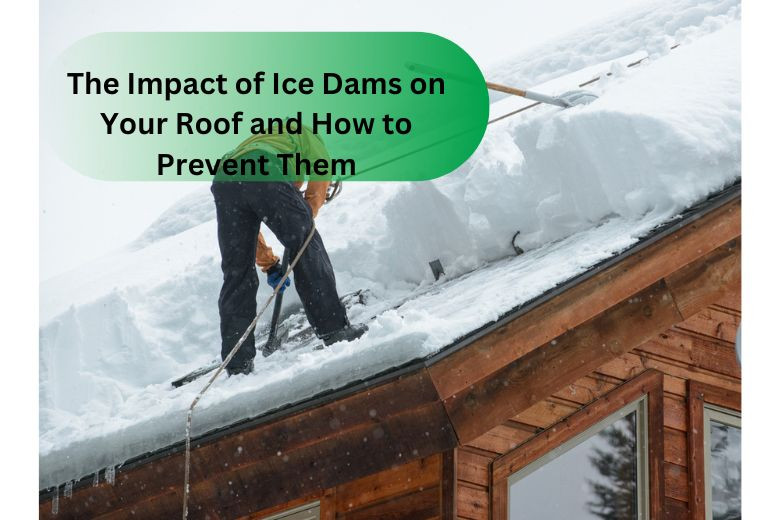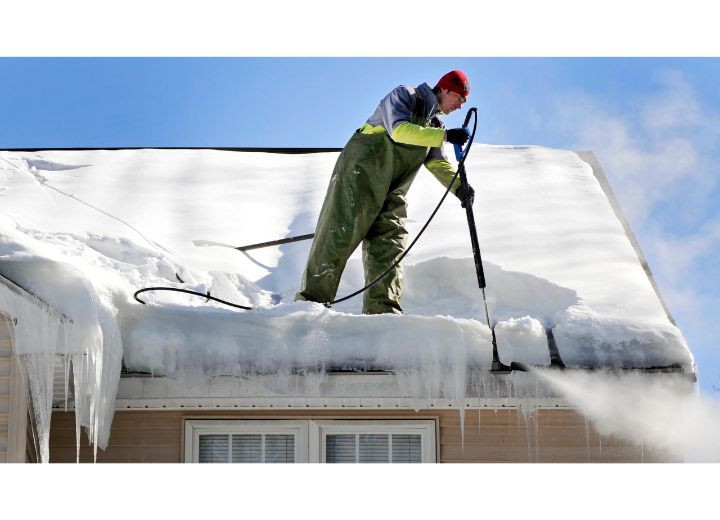The Impact of Ice Dams on Your Roof and How to Prevent Them
Posted on September 26, 2024 by Admin

Though winter can be one of the beautiful seasons, it comes with its challenges to homeowners, more so to those in colder climates. Of these challenges, how ice dams are going to affect your roofing is on top of the list. This ice damming may cause a lot of damage to your roof and home if not managed appropriately. This article aims to give an insight into their effect on your roof and some practical tips to prevent this phenomenon.
What Are Ice Dams?
Ice dams are created by snow melting on the roof, running down to the edge, and refreezing. This cycle is normally caused by uneven temperatures on the roof. The melting normally takes place over attic spaces at the warmer areas on the roof. Then, the refreezing happens when this liquid water hits the cold eaves, hence forming a dam. As more snow melts and water continues to flow downstream, it gets caught behind the dam, and the water level rises.
What an Ice Dam Can Do to Your Roof
The consequences of an ice dam to your roof can be quite long and very expensive:
1. Water Leaks
The most direct action that ice dams can have on your roof is leak water. Water behind the dam is able to flow under the shingles and into your home; this can cause water damage in areas like ceilings, walls, insulation, and other locations.
2. Structural Damage
Provisions of your roof exposed over a long time to ice and water can weaken its deck boards and rafters. This can continue to undermine your roof integrity over time, possibly causing costly repairs or even total replacement.
3. Shingle Damage
Freezing and natural thawing from the ice dams can loosen or even cause damage to the shingles, which makes your roof extremely susceptible to water infiltration and significantly lowers the life expectancy of your roof.
4. Gutter Damage
Ice dams can apply tremendous weight onto your gutters, causing them to sag, bend, or even fall completely off your roof. Gutters in bad condition will disrupt the way water drains from your home, thus perpetuating the problem further.
5. Mold and Mildew
Water that infiltrates into your home caused by ice dams could create an environment that is damp, in which mold and mildew thrive. This has a toll on the structure of your home and sometimes has negative effects on the health of your family.

Preventing Ice Dams
What is needed to help prevent the impact on your roof caused by ice dams is both immediate and long-term solutions:
1. Improve Attic Insulation
Proper insulation helps keep most of the heat inside the house and out of the attic. The temperature inside the roof will then become more uniform, and no melting will occur on the snow, which, in turn, will not refreeze.
2. Good Ventilation in the Attic
Good ventilation inside the attic provides for circulation of cold air over the roof, which keeps it at one temperature. Ridge vents and soffit vents can facilitate airflow and prevent ice dams if pre-installed.
3. Seal Air Leaks
Learn about and seal any air leaks from your living spaces into the attic. These are commonly found gaps around chimneys, exhaust fans, and plumbing vents. This action keeps the warm air from flowing into the attic and warming up the roof.
4. Roof Rake
When the snow begins to fly, use a roof rake to remove snow from the edges of your roof. This prevents the snow from melting and refreezing at the eaves.
5. Heat Cables
In areas known to form ice dams, heat cables can be installed along the edges of a roof to help melt the ice and allow the water to get off the roof safely.
6. Regular Maintenance
Regular maintenance, which includes regular roof maintenance, checking, and cleaning of gutters, promotes good drainage. Gutters that are free of leaves will not create ice dams by backing up.
Conclusion
Knowing what to do about ice dams on your roof, and taking preventive steps, can spare you a load of destruction and expensive Roof repairs. Better insulation, proper ventilation, sealing air leaks, a roof rake, installing heat cables, and frequent maintenance all contribute to keeping your roof and home in good condition from irreparable damage that ice dams can cause. Be prepared to keep your house dry and secure with every freezing winter.
Also Read :
The Benefits of Roof Inspections Before Buying a Home
How to Choose the Best Roofing Contractor
The Importance of Sump Pumps in Flood-Prone Areas
How to Install a Tankless Water Heater: Pros and Cons
The Benefits of a Home Plumbing Maintenance Plan
Roof Safety Tips for Homeowners
The Impact of Algae and Moss on Your Roof
How to Deal with Roof Leaks During a Storm
How to Create an Electrical Maintenance Plan for Your Home
Faqs
-
1. What are some of the causes of ice dams?
Ice dams happen when the snow that is on the roof melts, flows down, and freezes again at the colder eaves, thus forming a dam that traps the water behind it.
-
2. How, then, do ice dams harm my roof?
These can have various effects on your roof, including water leaks, structural damage, shingle damage, gutter damage, and finally, mold and mildew growth.
-
3. Will attic insulation stop ice dams?
Yes. Proper attic insulation ensures a uniform temperature over the roof, with no uneven melting of snow taking place, hence reducing the chances of ice dams forming.
-
4. Do heat cables work against ice dams?
Heat cables can do, to a degree, stop ice dams by melting the ice at their edges down the roof, allowing the water to run off it safely.
-
5. How often should I check my roof for ice dams?
You need to frequently check your roof for ice dams during winter, especially after heavy snow falling or changes in temperature, to rectify it from there as fast as possible.
Recent Post
- Top Plumbing Service Providers in Arizona, USA
- Top 10 Electrician Service Providers in Alabama, USA
- Top 20 Roof Repair Service Providers in Alabama, USA
- The Role of Roof Insulation in Energy Efficiency: Tips and Tricks
- Understanding Roof Damage from Wildlife and How to Prevent It
- How to Choose the Best Roofing Contractor for Emergency Repairs
- Roofing Maintenance for Historic Homes: Preserving Architectural Integrity
- The Importance of Proper Attic Ventilation for Roof Health
- How to Identify and Prevent Roof Mold and Mildew
- The Best Practices for Removing Snow from Your Roof